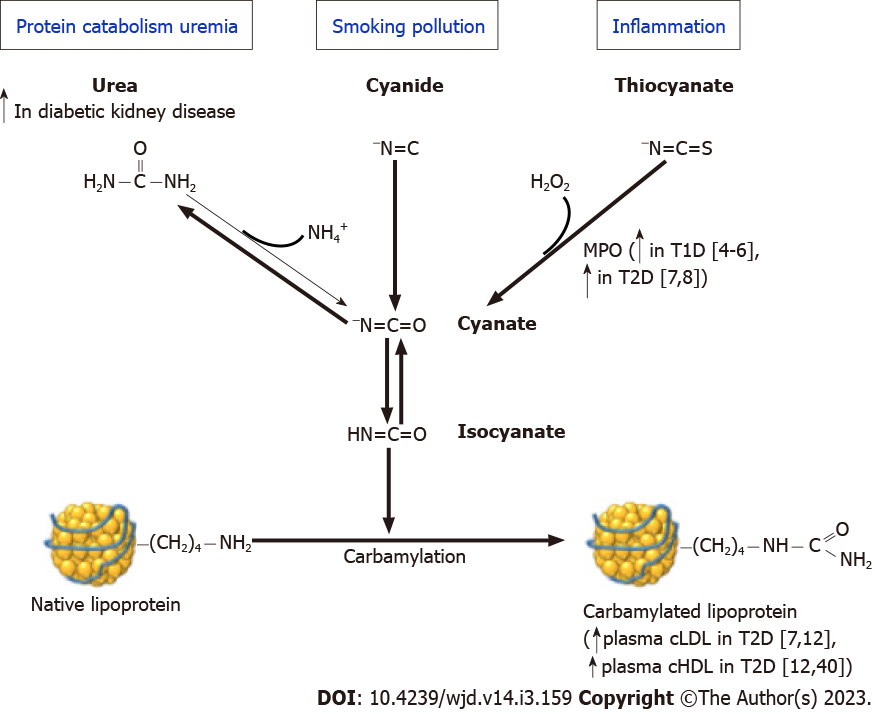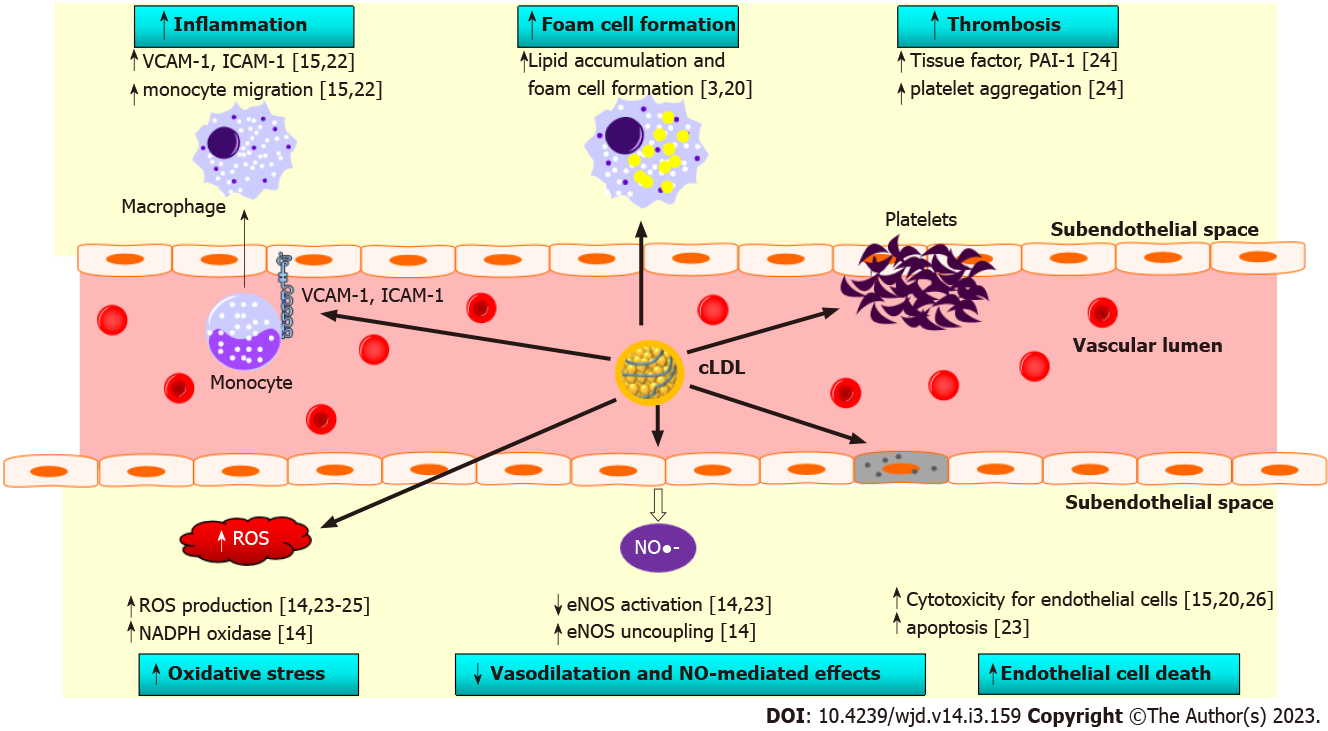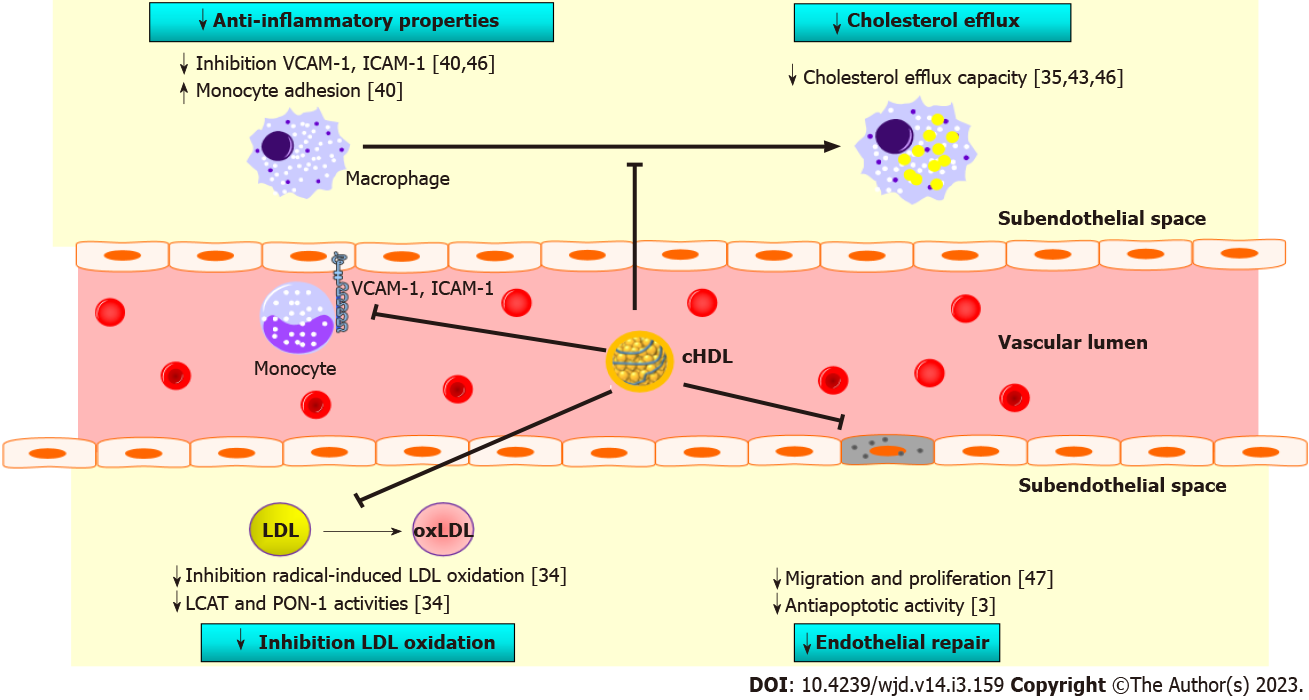Copyright
©The Author(s) 2023.
World J Diabetes. Mar 15, 2023; 14(3): 159-169
Published online Mar 15, 2023. doi: 10.4239/wjd.v14.i3.159
Published online Mar 15, 2023. doi: 10.4239/wjd.v14.i3.159
Figure 1 Carbamylation of lipoproteins is a non-enzymatic irreversible process mediated by isocyanate, and corresponds to the irreversible binding of a carbamoyl moiety to ε-NH2 of lysine residues in proteins, resulting in carbamyllysine.
Isocyanate originates from either the non-enzymatic spontaneous dissociation of urea, or from the myeloperoxidase (MPO)-mediated oxidation of thiocyanate, or to a lesser extent from tobacco smoke or atmospheric pollution. The urea pathway is of particular relevance in diabetic patients with chronic kidney disease. MPO level is elevated in patients with type 1 and type 2 diabetes (T2D). Plasma levels of carbamylated low-density lipoproteins and high-density lipoproteins are increased in T2D patients with or without chronic kidney disease. T2D: Type 2 diabete; CML: Carbamyllysine; MPO: Myeloperoxidase; Lys: Lysine; cLDL: Carbamylated low-density lipoproteins; cHDL: Carbamylated high-density lipoproteins.
Figure 2 Role of carbamylated low-density lipoproteins in atherosclerosis.
Carbamylated low-density lipoproteins (cLDL) facilitates immune cell recruitment in the subendothelial space by increasing the expression of adhesion molecules vascular cell adhesion molecule-1 and intercellular adhesion molecule-1. It also promotes accumulation of lipids in macrophages and thus facilitates foam cell formation. cLDL induces platelet aggregation and thrombus formation associated with a higher activity of tissue factor and plasminogen activator inhibitor type 1. In addition, cLDL activates NAPDH oxidase and increases the production of reactive oxygen species. cLDL are less efficient than native LDL at activating endothelial nitric oxide synthase. Lastly, cLDL is cytotoxic for endothelial cells. VCAM-1: Vascular cell adhesion molecule-1; ICAM-1: Intercellular adhesion molecule-1; PAI-1: Plasminogen activator inhibitor type 1; cLDL: Carbamylated low-density lipoproteins; ROS: Reactive oxygen species; eNOS: Endothelial nitric oxide synthase.
Figure 3 Role of carbamylated high-density lipoproteins in atherosclerosis.
The atheroprotective properties of high-density lipoproteins (HDL) are altered after carbamylation. Thus, carbamylation HDL (cHDL) partially loses its ability to remove cholesterol from macrophages and to inhibit monocyte adhesion. cHDL is less able to protect low-density lipoproteins from oxidation, likely due to reduced lecithin-cholesterol acyltransferase and paraoxonase-1 activities. Lastly, cHDL has an impaired capacity to facilitate endothelial repair. VCAM-1: Vascular cell adhesion molecule-1; ICAM-1: Intercellular adhesion molecule-1; PAI-1: Plasminogen activator inhibitor type 1; LDL: Low-density lipoproteins; LCAT: Lecithin-cholesterol acyltransferase; PON-1: Paraoxonase-1; cHDL: Carbamylation high-density lipoproteins.
- Citation: Denimal D. Carbamylated lipoproteins in diabetes. World J Diabetes 2023; 14(3): 159-169
- URL: https://www.wjgnet.com/1948-9358/full/v14/i3/159.htm
- DOI: https://dx.doi.org/10.4239/wjd.v14.i3.159











